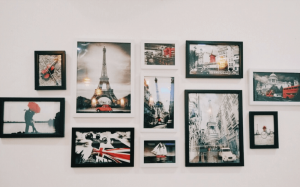Is design becoming politics?
 Became known longlist out of 60 nominees for the Beazley Design of the Year Award – the leading award in the design world. The exhibition of entries will be held in the London Design Museum from October 18. The names of the finalists will be announced on January 25, 2018.
Became known longlist out of 60 nominees for the Beazley Design of the Year Award – the leading award in the design world. The exhibition of entries will be held in the London Design Museum from October 18. The names of the finalists will be announced on January 25, 2018.
As the Guardian notes, “the 2017 nominations underline the contribution of designers to the protest movement, gender campaigns and the resolution of humanitarian problems.” Here is the text of the article with abbreviations.
Nominations of this year testified that on the tenth anniversary of Beazley’s existence, the award became politicized and “social” as never before.
When, in response to Donald Trump’s remark that all the attention of women is focused on “pussies,” Los Angeles knitting lovers Krista Suh and Jayna Zweiman launched their online pattern for knitting hats with cat ears They did not suspect that this would be the signal for the beginning of the most extensive “craftivist” movement of all times. However, just a day after Trump’s inauguration, tens of thousands of people dressed in pink hats took to the streets of Washington and other cities of the world for the Women’s March, an unforgettable symbol of women’s solidarity and the power of collective action.
The campaign of The Finding Her, developed by the Japanese agency IC4 Design for the UN mission in Egypt, is a series of very detailed scenes in the style of the cartoon “WILL-E”. They emphasize the absence of women in the workplace in Egypt. Only 23% of the total number of Egyptian workers are women.
In the pictures people are busy with politics, science and technical work. But try to find among the figures drawn – women! “Finding women among technologies should not be so difficult” (“Finding women in technology shouldn’t be this hard”), says the title of the poster where the army of engineers collects the space shuttle.
The global technology giants are dreaming that the call for gender equality will come true. In May last year, Google released a set of emoji icons with women representing different professions. And they also entered the nomination list of the award in the category of graphics. Given the fact that women under the age of 30 today today most often resort to Emoji, the emergence of women doctors, teachers and builders in this area is long overdue.
Brexit has become another theme that inspired designers. In his campaign against the exit from the EU, the famous photo artist Wolfgang Tillmans (Wolfgang Tillmans) used abstract landscape photographs on top of which were overlaid with white text to create posters. And Nathan and Sam Smith carried out the Me & EU project, thanks to which cards from more than 100 British designers will be distributed throughout Europe as a symbol of the inviolability of Europeans ties even after the referendum.
Other nominations indicate that design is the force that consolidates the world, making it a more understandable place. The free Noto font from Google and Monotype appeared as a result of the five-year collaboration of hundreds of linguists and designers. It works in at least 800 languages and scripts, from Latin and Cyrillic to Hebrew, Egyptian hieroglyphs and Cherokee.
Noto is another science fiction invention – the world’s first “transferable” speaker, developed by Waverly Labs. It can translate from 15 different languages in real time. The Hitchhiker’s Guide to the Galaxy and the Star Trek universal translator have become a reality! The speaker-translator appeared thanks to a crowdfunding campaign, during which over $ 5 million (3.9 million pounds sterling) was raised.
Last year, the Beazley Design Grand Prix was awarded the design of a temporary shelter for Better Shelter refugees from Ikea. In 2017, in their innovative projects, designers are once again responding to the unprecedented level of global migration.
Avy’s search and rescue drone is designed to help refugees crossing the Mediterranean. During this dangerous trip last year, 3,500 refugees died.





